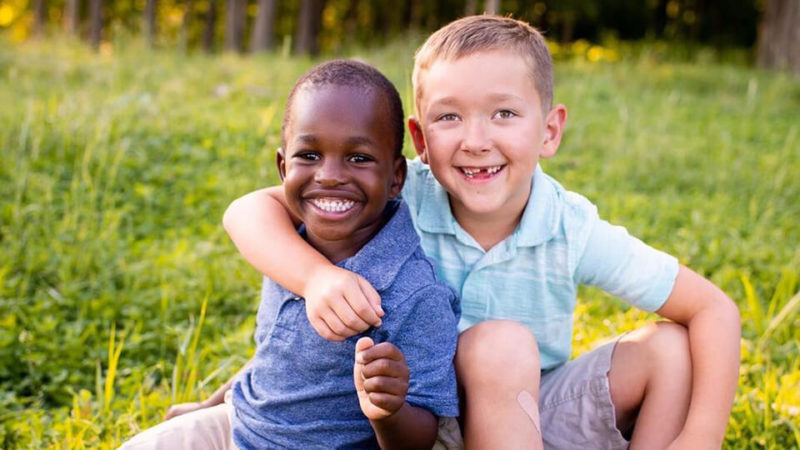Adoption and the Experience of Biological Siblings—Part II

Dr. Jana Hunsley is a licensed clinical social worker, psychologist, and TBRI® practitioner who has studied the effects of adoption on biological siblings. Part one of this series explores her findings on the experience of biological siblings when a family grows through adoption, and part two explores her recommendations for improving that experience.
Part Two: Improving the Sibling Experience
There is no manual for family integration when a family grows through adoption. This is because so much varies from family to family. From the needs of the child being adopted to the composition of the adoptive family, each will bring different strengths and pose different challenges during the adjustment period that follows adoption. Luckily, upon learning about some of the common experiences for biological children in adoptive families, Dr. Jana Hunsley outlined five steps families can take to improve upon their experience.
1. Practice Mindfulness
Mindfulness can be practiced as an individual but also as a family. As adoptive families welcome a new family member, individuals should be mindful of their own mental and emotional states, triggers, and effective regulation strategies, but also of the family’s mental and emotional states. By being present with the family, parents can be in tune with each child and perceive when they have unmet needs. Without mindfulness, it will be difficult to nurture open and honest communication and family members may end up feeling a lacking connection.
2. Model Openness
Sharing feelings is an important part of navigating any transition. For some adoptive families, this may already be the norm prior to welcoming a new family member and modeling openness will be simple. For others, talking about feelings may be awkward or uncomfortable before it becomes routine. To engage in open and honest family conversation, parents need to demonstrate that it is safe, normal, and encouraged to discuss what they are thinking and how they are feeling. At first, parents should aim to model openness once a day, for example, by sharing the best and worst part of their day over dinner until everyone feels comfortable joining in.
3. Ask Questions
Open-ended questions are one of the simplest ways to demonstrate interest. Parents can create space to engage and connect by intentionally phrasing questions in a manner that discourages yes or no responses. Open-ended questions can spark free and honest conversation about what family members are thinking and feeling. To form this habit, start by asking at least one open-ended question each day.
4. Be Receptive
Putting yourself in another’s shoes is a great way to practice being receptive. It’s all about listening and thinking about what you are hearing from the other person’s perspective. Ensure their voice is heard whether or not you agree with what they are saying. This is also a great way to practice empathy and compassion.
5. Practice Affirmations
The key to affirmations is making them authentic. There are no specific words that family members need to hear. Rather, families should practice affirmations in the way that’s most natural for them. For example, through a note, text, touch, or verbal message. What matters is that each family member feels genuinely seen, known, and loved.
While following these steps doesn’t mean that an adoptive family will adjust without any challenges, they help equip families to recognize and manage challenges when they arise so that every member of the family can thrive.
To learn more about siblings and family integration, enroll for Families Are Forever class 301!